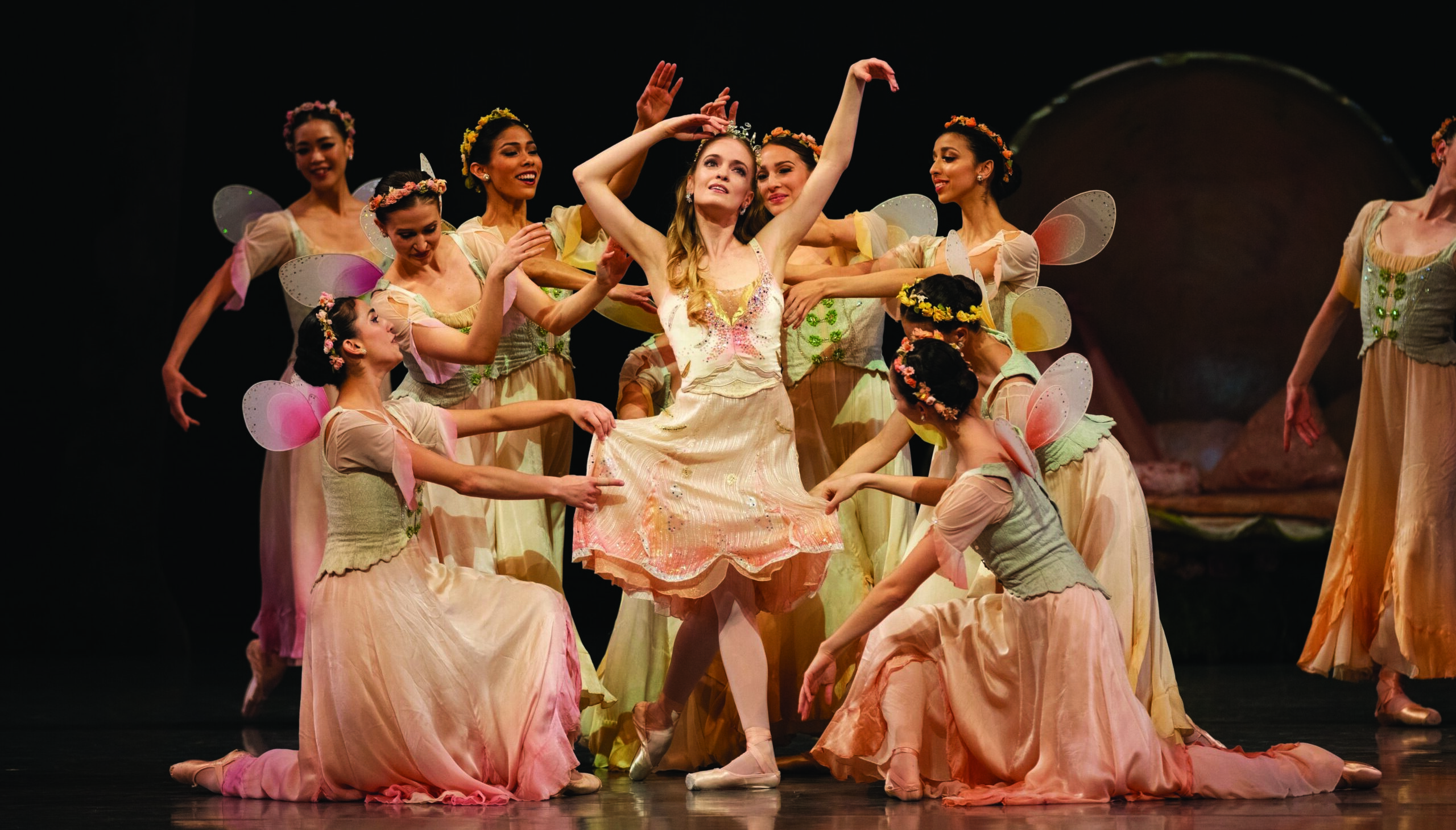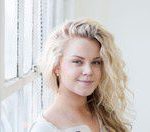
When San Francisco Ballet principal Sasha De Sola takes the stage, audiences can be confident she will bring them on an authentic journey. She embodies each role so completely that it seems she’s feeling her character’s emotions internally. What’s more, she invites audiences in, telegraphing her feelings to the rafters through more than just technical prowess. While she’s dazzled as a principal with the company for seven years, her mastery didn’t happen overnight; De Sola’s success came with years of diligent effort and guidance from devoted teachers.
De Sola changed studios often during her early training. She began dancing when she was 2 years old at a competition studio in Orlando, Florida, called Showtime Children’s Dance Studio. “I immediately fell in love with dance and performing,” she says. “I felt an incredible freedom onstage and constantly wanted more of it. I still feel that way—I always want more.” At 9, she moved to a different competition studio called Starz Dance Studio in Casselberry, also in Florida, but it didn’t take long before she was restless once again. She wanted to focus more intently on ballet. “I liked that there was a right and wrong way to do something [in ballet],” she says. “The technical element intrigued me, and it challenged me more than any other form of dance.” So at the age of 10, De Sola asked her mother to enroll her at a professional ballet school, Southern Ballet Theater (now Orlando Ballet), in Orlando. In an effort to maintain friendships from her old studio, she attended both Starz Dance Studio and SBT until she was 11, at which point she left the jazz competition world entirely and transferred to Central Florida Ballet, where she received the bulk of her early classical training. She stayed there until she was 13, then moved away to attend the now-closed Kirov Academy in Washington, DC. “It was difficult leaving home at such a young age, but I was quite determined,” she says. “I loved the training there, and the chance to be around other like-minded dancers who pushed and challenged me. For the next three years I trained under [Vaganova specialist] Ludmila Morkovina. I really believe that it is thanks to her that I get to experience ballet as I do.”

Though she was no longer chasing jazz or commercial aspirations, De Sola participated in competitions like Youth America Grand Prix, USA International Ballet Competition, and Varna International Ballet Competition from the time she was 10 years old. At just 16, she sent a video of herself competing at the USA IBC to San Francisco Ballet. “I just wanted to get a feel for what it was like to audition for companies, and see what kind of a response I would get,” she says. “I was not expecting anything to come of it, but Helgi Tómasson called me shortly after and invited me to come take company class.” De Sola flew in for class and was subsequently offered an apprentice contract with the company starting in 2006. But the first year dancing with SFB was challenging for her. “I had a little bit of culture shock,” she says. “Ludmila always had her eye on me while at Kirov—she was constantly giving me corrections and pushing me to be better. All of a sudden I was the youngest in a room of 80 dancers, and nobody was looking after each step I did anymore. I had to do it myself.” During this time, De Sola lived in the dorms with the SF Ballet School students. “I was a minor and could have a more structured and chaperoned living situation that way,” she says. “What I hadn’t anticipated was the difficulty in not feeling accepted by my peers in the dorms. Since I was working with the company and not in the school, I very much felt like an outsider.” According to De Sola, it was one of the more difficult experiences of her dancing career life.
Eventually, she got her footing, and opportunities came knocking. After gaining her apprenticeship in 2006, De Sola became a corps de ballet member in 2007, then was promoted to soloist in 2012 and principal in 2017. Since then, she’s shone bright as Odette/Odile in Swan Lake, Aurora in The Sleeping Beauty, Kitri in Don Quixote,Cinderella in Christopher Wheeldon’s Cinderella, and more. In 2007, she won the silver medal in the professional division at the World International Ballet Competition in Orlando and, in 2020, was nominated Dance Europe’s Dancer of the Year.
Here, De Sola shares some of the lessons she’s learned through dance, thoughts on her most influential teachers, advice for educators in 2023, and more.
On the lessons that have made all the difference in her career “Something important many teachers taught me is to value my individuality. I think that it’s beautiful to not be like anyone else. So really develop that—even from the barre—and find ways to let your love for dance shine through. On a more practical note, my teachers taught me to be aware of where my weight was. They wanted me to really feel the opposition of energies both vertically and horizontally—to find width in the back and strength in the center, and to not be afraid to take up space.”
On her most influential teacher “Ludmila Morkovina passed her invaluable knowledge on to me. She learned directly from Vaganova, and having that close tie to someone so influential in the world of ballet is not something I take lightly. I recognize what a privilege it was. I’d also like to recognize Heather Fryxell, who was the prima ballerina of Southern Ballet Theater when I was young. She became my teacher when I went to Central Florida Ballet, and she is someone I am still close with today. She not only believes in me as a dancer, but in who I am as a human being, which has been huge for me.”
Her advice for educators in 2023 “Being a dancer is so much more than a physical pursuit. Of course it’s important to help students become strong technically, but who they develop into as human beings also influences how their artistry comes across onstage. At the end of the day, we are people first and dancers second. I think the teacher–student relationship can be one of the most important relationships in a dancer’s life. Whether or not they dance professionally, having your mentorship is pivotal, so make sure that is your priority.”
On her lifetime goals “I want to positively influence others in my life. I have been fortunate to have had various angels who have supported me and carried me to where I am today. I am so grateful to them and hope I can do the same for others. I try to bring that to my work each day, and I hope to be able to continue that in the future from various roles within the ballet world.”





